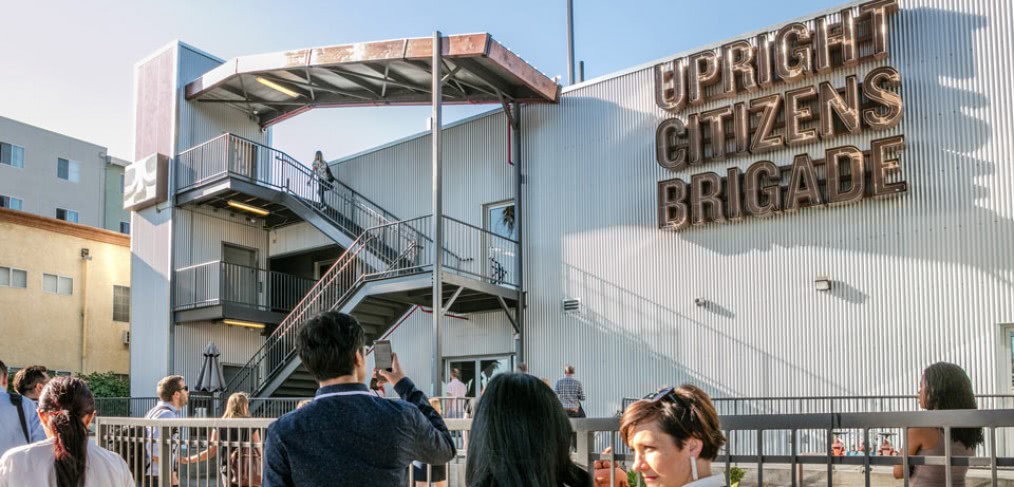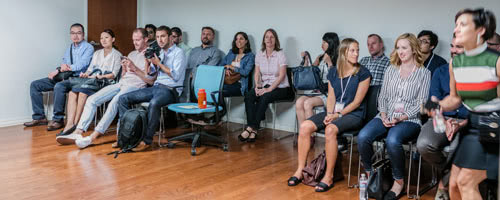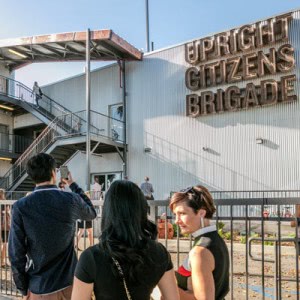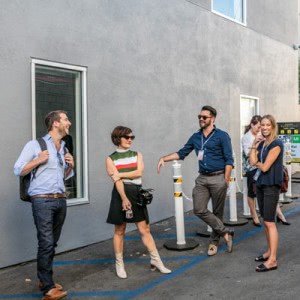
Improv It Like Poehler
Fluorescent lights and low ceilings overhead, we gingerly filtered into rows of chairs in one half of the small rectangular room, staring ahead at the other half of the space—empty, lending no clues as to what was ahead of us. All we knew was that we were all about to be forced outside of our comfort zone. What was the point of learning improv during the first CallisonRTKL Design Conference? Our film entourage wasn’t allowed to stay and no photos were being taken. The anxiety in the air could have been cut with a knife.
what was ahead of us. All we knew was that we were all about to be forced outside of our comfort zone. What was the point of learning improv during the first CallisonRTKL Design Conference? Our film entourage wasn’t allowed to stay and no photos were being taken. The anxiety in the air could have been cut with a knife.
Exactly how the three hours began is a blur, but quickly we were up and starting to move. We were instructed to literally run around this awkward room, to secretly choose a pretend enemy and chase them, all the while laughing like schoolchildren.
Confused by the chaos and sweating like mad, we were on to the next crazy task and, still, none of us knew exactly why we were here. The exercise was to pick a partner and, without saying a word, physically recreate letters of the alphabet. The instructor shouted out one letter at a time as we scrambled with one of our newly-acquainted colleagues to create the form. We had to get comfortable really fast and learn to “listen” without saying anything—an endeavor at which most of us failed pretty hilariously at the start.
 By the third or fourth letter, arms and legs were intertwined, some were engaged in mini cheerleading stunts, and all had flushed faces and bottled laughter behind big smiles. We were working together and coming up with great ideas on the fly. While we were technically learning the art of comedy, a sense of discovery with bigger implications for our work as designers was beginning to surface.
By the third or fourth letter, arms and legs were intertwined, some were engaged in mini cheerleading stunts, and all had flushed faces and bottled laughter behind big smiles. We were working together and coming up with great ideas on the fly. While we were technically learning the art of comedy, a sense of discovery with bigger implications for our work as designers was beginning to surface.
Next, in a large circle, we had to “tell” a story as a group—one word per person at a time. Building a story on the previous word without being able to decline the idea was challenging, but we supported and comforted each other to create a solid dialogue.
Continuing with collaborative storytelling, we paired up with new partners for one-on-one conversations. One person tossed out an idea, while the other was mandated to respond with “NO” before adding another thought. While we laughed our way through this awkward spat, we quickly felt the room get aggressive and louder as the negativity built. We tried our conversations again, but this time answered our partner with “YES, BUT…” before adding our own thoughts. The exchanges were more accepting in nature, but there was still conflict in the air.
Finally, we were only allowed to react to our partner’s comments with “YES, AND…”—even if we didn’t like their idea. It was so simple, yet so magical. Everyone was laughing, ideas were flowing, conversations remained positive and progress was made. Is it as simple as saying “yes, and…” when reacting to and generating ideas in order to avoid tension, frustration and conflict? Could this concept be sustained in the workplace? 
Still skeptical, we were now ready for SNL-type improv. Just like Amy Poehler, we were going to put the “yes, and…” concept to the test by acting out unrehearsed interviews. In our groups of four, we were prohibited from discounting any ideas put forth by our collaborators; we could only embrace, enhance and evolve it into a convincing story for our audience. We were make-believe groups of crafters, boy bands and college clubs all acting out our lives together at a moment’s notice. It was incredible! It was hilarious! IT WAS HARMONIOUS.
It was amazing what we were capable of creating as a collective group by keeping “yes, and…” as our mantra. We learned how to act and react positively to the most ridiculous situations and turn the result into gold.
When our time at Upright Citizens Brigade was done, we felt elated. We had transformed our approach to creating new concepts and thoughts. After three short and sweaty hours, we believed we could transform the way we lead projects and collaborate as designers. We went into the workshop with many reservations, but left with a new perspective, contagious energy and a bond with each other that will last forever.
Of course, what I’ve shared isn’t the whole story—what happened in improv, stays in improv, yes? But it is our hope and intention that the “yes, and…” concept will live on within our group and that we can influence others to embrace it, too.
